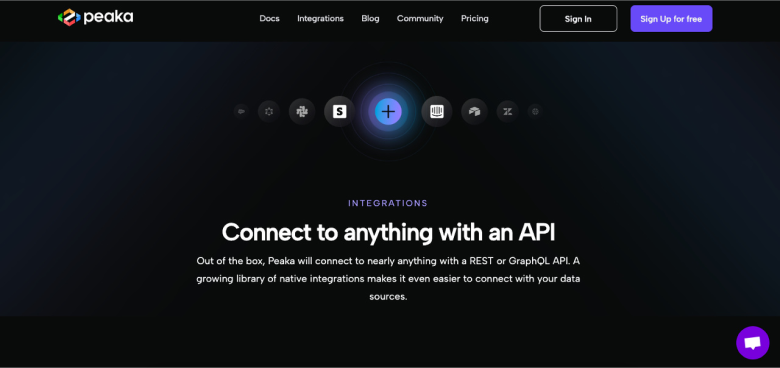What is the Modern Data Stack?
Introduction
In this data-rich world, being able to access, unify, and utilize data, and turn it into information can give an organization a lasting advantage over competitors.
The modern data stack has become the foundation of this data-driven revolution, from small businesses to global enterprises.
It is more than a buzzword; it represents a paradigm shift in how organizations deal with, analyze, and exploit data.
In today’s article, we will provide answers to questions such as what is the modern data stack, what are its benefits and why should you care.
What is the modern data stack?
At the heart of our article lies a fundamental question: What is the Modern Data Stack?
A modern data stack is basically a collection of tools, technologies, and processes that enable companies to collect, store, process, and analyze the collected data.
The modern data stack is therefore a progression of traditional data processing approaches meant to tackle modern-day data complexities.
These are challenges that plagued a traditional data setup with data silos, making it hard to access information for real-time analysis.
In contrast, the modern data stack unifies and simplifies all aspects of the data lifecycle.
It is an intricate combination of many constituent parts such as data warehouses, ETL (Extract, Transform, and Load) processes, and data visualization platforms.
Now that we've defined what a modern data stack is, let's delve into the myriad of benefits it offers to organizations:
1. Efficiency
The modern cloud data stack is able to make the data integration processes more seamless and be more effective, requiring less time and effort to extract insights. Such efficiencies enable organizations to act in a more timely and data-informed manner.
2. Scalability
The modern data stack can scale as quickly as you need it for your growing business. It adjusts to data volumes, allowing systems to work without any difficulty, even under more load.
3. Real-time insights
The ability to process data in real-time translates into better speed for business actions where organizations can move fast and make decisions based on the current information available.
4. Data integration
The modern data stack also helps break down the silos between different data sources, ensuring that all your data can be accessed and analyzed together.
5. Cost efficiency
Although there might be a need for an initial investment in a modern data stack, the resultant savings in the long run are significantly high. The increase in both efficiency and scalability brings about lower operational costs.
6. Security
Modern data stacks involve many security precautions for safeguarding sensitive data; thus, using them to handle data is the safer option.
7. Accessibility
The easy-to-use interfaces and visualization tools make data available to even non-technical staff, thereby democratizing data access throughout an organization.
8. Competitive advantage
Organizations that embrace the modern cloud data stack stand at a competitive advantage as they can respond fast to changing market dynamics and emerging opportunities.
What are the components of the modern data stack?

Having established a clear answer to the question of what a modern data stack is and what it brings along, let’s highlight its major parts.
A modern data stack is typically a combination of a few tools and technologies that have different roles in facilitating the process of analysis.
1. Data sources
Data sources form the basis of the modern data stack.
These could be internal sources such as databases within your firm, or external ones including web services, social media, and third-party data providers.
Raw data from these sources flows into your data stack.
2. Data integration tools

The transformation is done by data integration tools, which convert raw data into a form suitable for analysis.
These tools process the data, making it ready for use.
Peaka, a no-code data integration tool, comes to your aid at this point! By checking out the features offered by Peaka, you can create the data stack that will serve your data integration needs!
3. Data warehouses
Data warehouses serve as the central repository for your integrated and transformed data.
These cloud-based or on-premises storage solutions enable efficient data storage and retrieval.
Data warehouses are optimized for analytical queries, making them essential for performing complex data analysis and generating insights.
4. Data transformation and ETL
ETL (Extract, Transform, Load) tools are vital components in the data processing pipeline.
They manage the transformation of raw data, carrying out various tasks such as filtering, aggregation, and data enrichment to make the data ready for analysis.
ETL tools ensure that the data fits the schema of your data warehouse and follows data quality standards.
5. Business intelligence tools
Business Intelligence (BI) tools provide the interface through which users can interact with and derive insights from the data stored in the enterprise data warehouse.
These user-friendly tools allow you to create reports, build real-time dashboards, and visualize data, enabling non-technical users to explore data and make data-driven decisions.
6. Data orchestration
Data orchestration tools are responsible for managing the flow of data within the Modern Data Stack.
They automate and schedule data movements, transformations, and other processes to ensure a streamlined and efficient data pipeline.
These tools help orchestrate complex data workflows and are pivotal in maintaining data consistency and reliability.
7. Data governance and security
Data governance and security tools are paramount in ensuring the reliability and security of your data.
They help enforce data governance policies, ensure compliance with data privacy regulations, and maintain the confidentiality and integrity of your data.
These tools control user access, authentication, and authorization, making sure that sensitive information is protected from unauthorized access and breaches.
Final thoughts
Modern data stack: In the era of big data, it’s finally a tool that makes sense. This changes how data is stored and accessed, making it more open and effective as well as better protected.
In conclusion, it is necessary to use and know the modern data stack. This is not just an IT improvement, but a step towards a future characterized by data dependency.
This change can no longer be ignored as doing that can devastate an organization, and the advantages are so obvious.
Next time you’re wondering what the modern data stack is, think of it as a bridge between today’s data and tomorrow’s success. So, embrace it and set out on the journey to make data your best friend in the future.




 Please
fill out this field
Please
fill out this field









